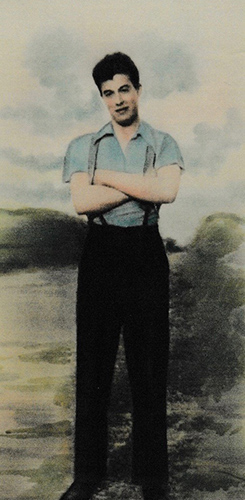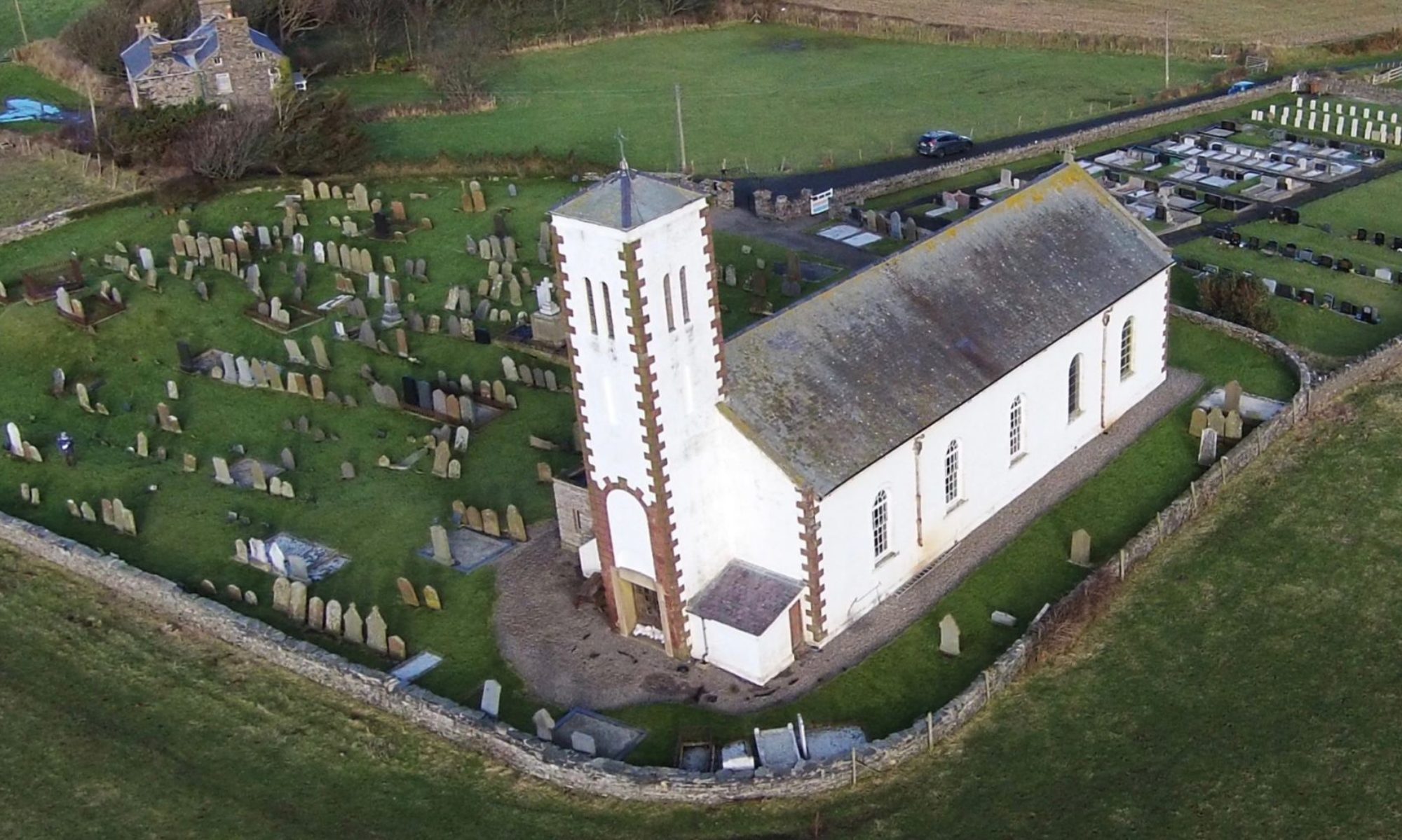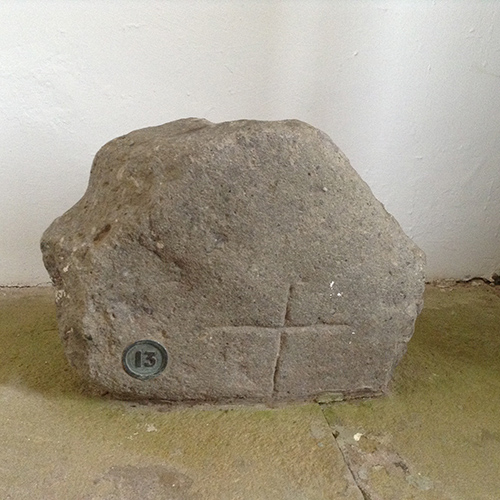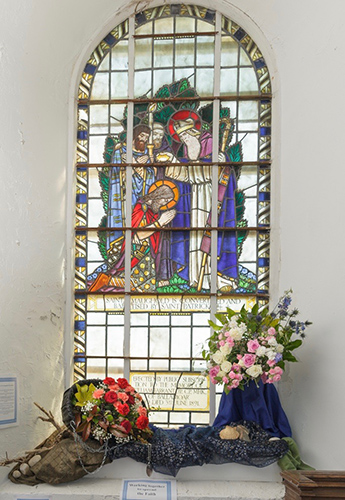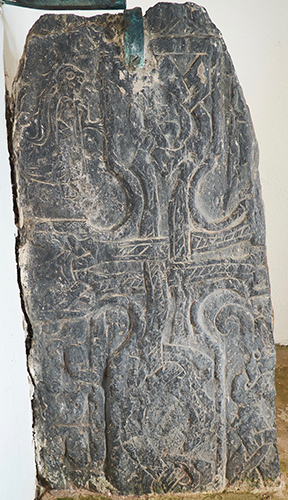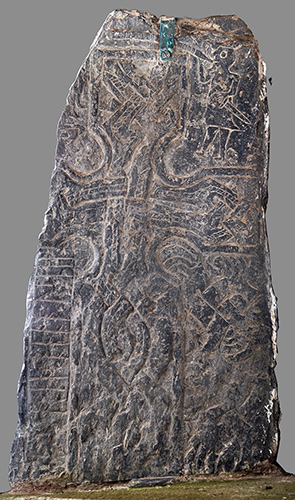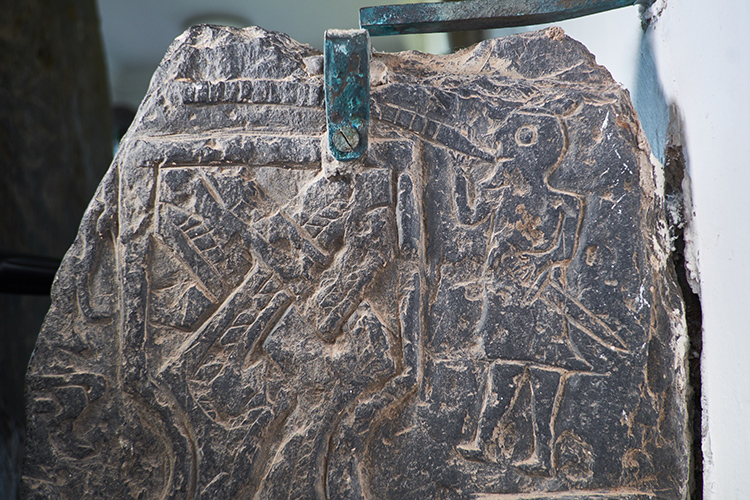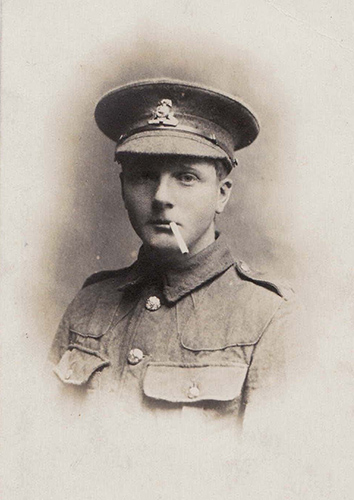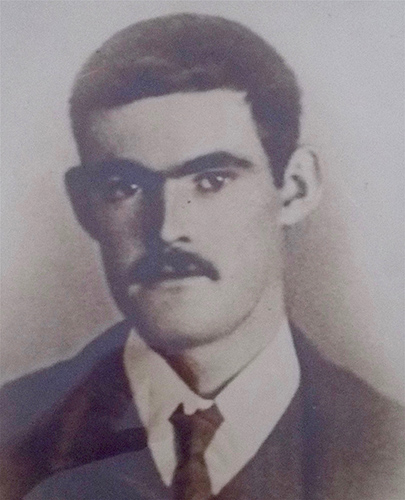Jurby Church Heritage Site
Situated on the North West coast of the Isle of Man is Jurby Church Heritage Site, an ancient site reflecting the history of the parish of Jurby and of the Isle of Man. At the heart of the site is 200 years old St. Patrick’s Church, a landmark from sea, land and the air. Inside this enduring symbol of the parish of Jurby, in the churchyard and in the views from St Patrick’s are pervasive reminders of the history of the site, the surrounding land and of the Island.
Where the War Memorial now stands in the churchyard was a church dating from the beginning of the 13th century, traditionally built on the site of an early Christian keeill, itself constructed in an ancient pagan burial ground dating back thousands of years. Edward 1 appointed a chaplain for the church at “Dureby” or Jurby in 1291. The sandstone font in the present St. Patrick’s Church came from the Old Church.
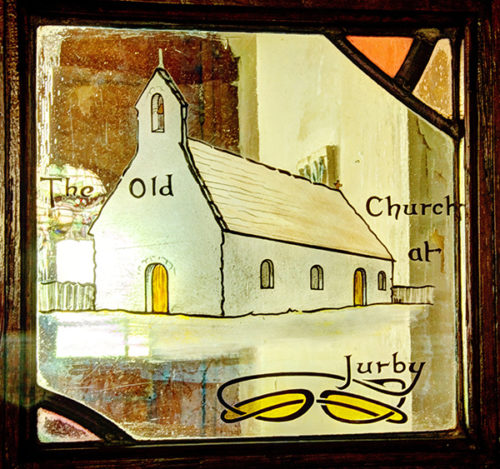
Once a number of pagan burial mounds dotted the landscape around the church. Now just two remain. The mound in the churchyard is thought to a Viking burial mound, although there may be even earlier graves beneath it. Cronk ny Arrey Lhaa at Sartfield to the north and visible from the church is thought to date from the late Neolithic period.
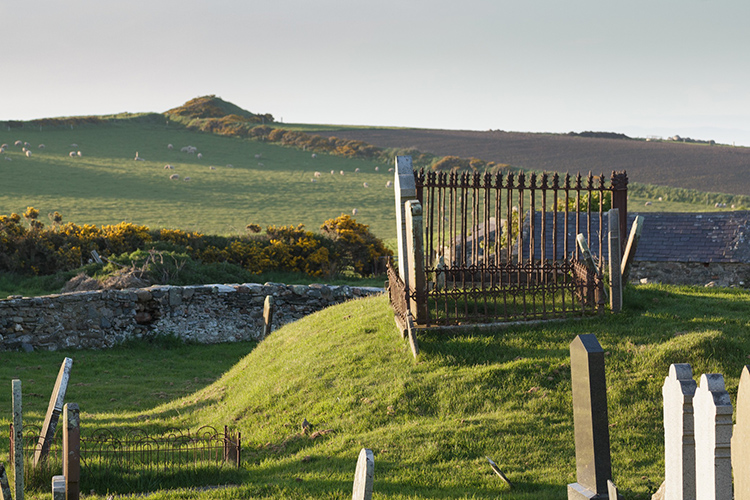
Early Christianity and St Patrick
Tradition has it that it was through St Patrick that the Christian faith was first taught to the Manx people, and he became widely and deeply honoured by them. Of the many dedications to St Patrick in Man, one anchor of these is St Patrick’s Isle Peel, and the other is Jurby, which has also sometimes been called St Patrick’s Isle. One story tells of St Patrick first landing on Man at Jurby Head, and throughout the centuries Jurby’s affection for the patronal saint has endured.
The Churchyards
The Vikings settled in Man in the 9th century, and the area of the northern plain which became the parishes of Jurby and Andreas has a particularly rich Viking heritage. The pagan burial mounds in Jurby date from the beginning of the 10th Century, yet within a generation there was a change in burial rites. There was an end to accompanied burial and instead of the grave of an important man being marked by a mound it was marked by a memorial stone. Crosses on a stone, which were often very simple, such as one which came from Ballacurry keeill, had marked Christian graves for hundreds of years. On Scandinavian crosses were pagan gods and Norse myths and legends alongside Christian motifs.
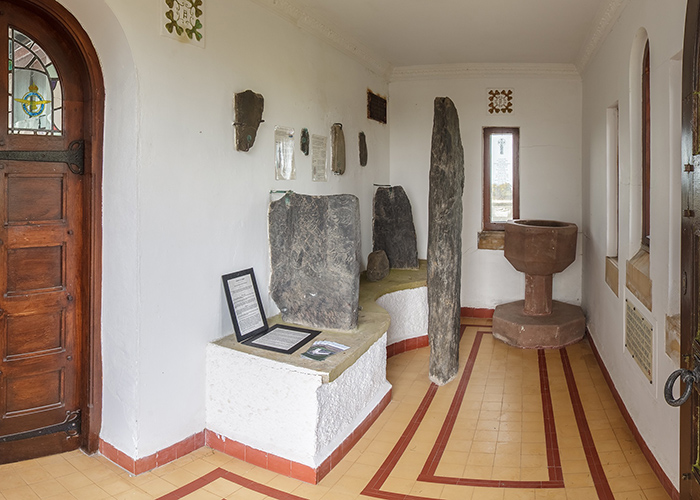
The Heimdall Cross No. 127
This cross was found by the churchyard wall and only part of it has survived, having suffered damage before being placed in a cross shelter in the early 1900s. This cross dates from the 10th century and is of special significance as it has Scandinavian runes.
Other significant stones which came from keeills in the parish are the Odin Stone No. 125 and the Sigurd Cross No. 119.
There are memorials which date from the 1400s in the burial ground surrounding the church. In the 1930s a new graveyard was made from part of an adjoining field.
Jurby War Memorial
Jurby Church reflected the growth of the Church in the Isle of Man and of agricultural prosperity, but it soon began to mirror the decline of the rural parish. The population was already falling when the present church was built and the congregation started to fall, with many going to the Wesleyan chapels at Sandygate and in the east and west of the parish. By 1911 the population numbered just 516. There was little work, and it was usual for the young men to seek employment in other parts of the Island or in England. Many emigrated to Canada, America, Australia and New Zealand.
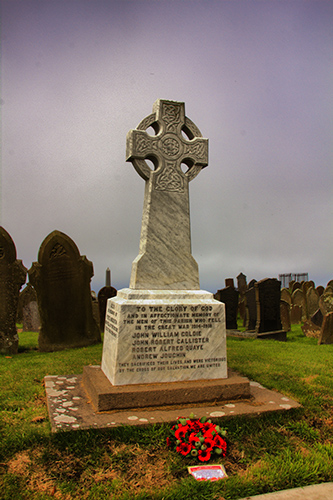
Of the four Jurby men who died in the First World War, only one of them was living in the parish at the time of their enlistment, although all of them thought of Jurby as their home. John William Goldie was working as a horseman at William Cannell’s farm at East Nappin before the war. He was one of the first to volunteer and was described by his officer as one of the bravest men in the British Army. John Robert (Bobby) Callister was a farm worker’s son who had left the Island some years before the War and was working as a farm servant at Keswick when he enlisted in 1915.
Robert Alfred (Bertie) Quaye had worked on a number of farms around the Island before emigrating to Australia in 1911. He enlisted in July 1916 at Canterbury, New South Wales, and saw just 30 days of active service before being killed in the Second Battle of Bullemore. Andrew Joughin was the the son of the blacksmith at Jurby West and worked in Gelling’s Foundry in Douglas when he left school. He joined up as soon as he was old enough and saw considerable action before he was killed just a month before the war ended.
The Second World War
In 1937, with the imminent threat of war, the Air Ministry chose Jurby as an ideal location for an airfield and bombing training station, and RAF Station Jurby and RAF Station Jurby Head opened in 1939. By its very nature as a training station for navigators, bombers and air gunners there were a large number of accidents, many occurring on or around the airfield. There were also accidents in other parts of the Island involving Jurby based aircraft, and others when bombers from other stations were training on the Jurby bombing ranges. The war graves in the churchyard remember just some of those who died.

Percy Moughtin, the only Jurby man who died in action in the Second World War, is remembered on the War Memorial.
